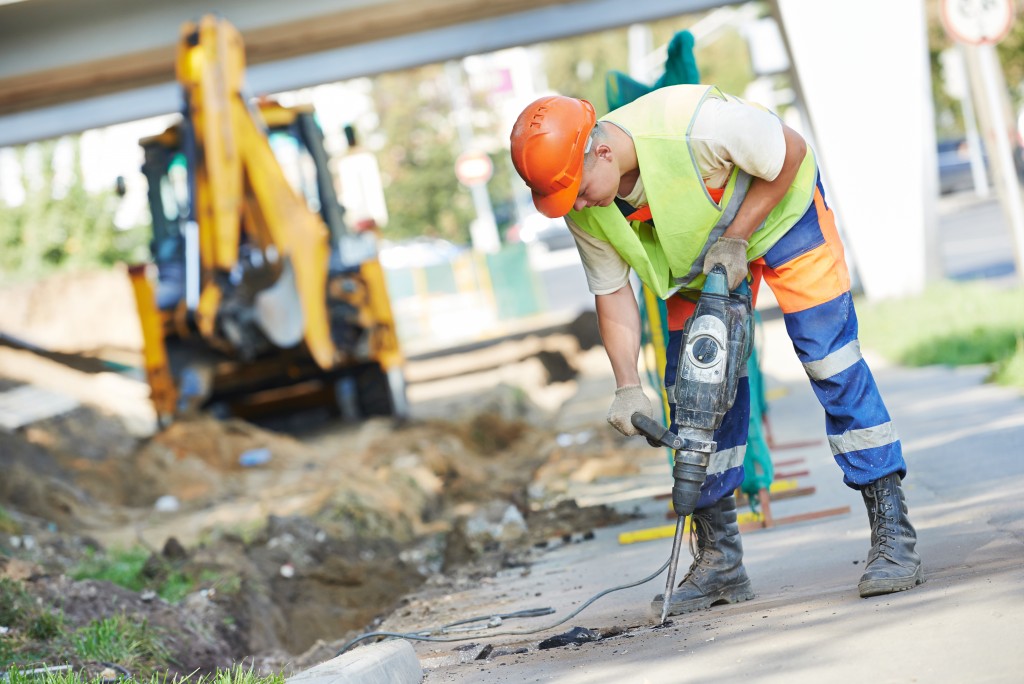If you work in construction, then you know how powerful a jackhammer is. Workers rely on jackhammers to demolish concrete, pavement, and other hard surfaces for construction and renovation projects. You also know how challenging it can be to operate this power tool.
It also very dangerous if misused. Due to the dangers posed by this powerful tool, only properly trained personnel are allowed to operate a jackhammer, if only to minimize the risks of accidents occurring in the workplace. You also need to wear safety equipment such as a face mask or dust respirator.
Whether you’re a newbie or an experienced operator, here are a few practical pointers for safer and more productive jackhammer use:
1. Wear personal protective equipment.
This one is non-negotiable. Jackhammers are dangerous, even if used correctly. Wear protective clothing such as gloves, ear protection, and a face mask or dust respirator.
2. Choose the right type of jackhammer.
The kind of jackhammer you’re going to use depends on the type of work that needs to be done. For small projects, you can use a handheld unit. Save the heavy-capacity hydraulic hammers for breaking hard concrete.
3. Use the right type of hose.
The hose your jackhammer needs depends on the distance of the site from the air compressor, the pressure required, and the difficulty of the project.
4. Position the air compressor properly.
The unit should be in an open space far from the worksite to minimize noise hazards.
5. Use your legs to move the jackhammer.
This helps prevent back injuries caused by incorrectly moving the unit.
6. Push the jackhammer against the surface to start.
Jackhammers are often fitted with a safety lock that prevents it from accidentally starting if there no pressure is detected or if it is improperly positioned.
7. Use the right type of jackhammer chisel.
Here’s a quick guide: spade points for breaking asphalt, chisel points for concrete, and rock points for cutting through rock. Never use a damaged or broken jackhammer chisel.

8. Always check the jackhammer for signs of damage.
Makes sure that everything is in their correct position and that all safety protocols are being followed. If you’re using a pneumatic jackhammer, check the hoses and air compressor as well.
9. Here’s a tip for reducing jams.
The jackhammer should be positioned at a slight angle, leaning towards the user, to reduce the possibility of the jackhammer chisel or tip jamming in the surface. The angled positioning should also help with the grip and handling of the jackhammer.
10. Place the power cord over your shoulder.
For electrical models, accidental damage to the cord could result in electrocution.
11. Secure the ends of the hose.
Dangerous whipping may occur if an air leak or accidental cut happens.
12. Spray water on the surface being broken.
It should reduce the amount of dust and particulates in the air.
13. Take a break.
Jackhammers aren’t meant to be used for a long time. Shifts should be rotated often to minimize the chances of permanent physical and neurological damage.
A jackhammer isn’t a child’s tool, and special care should be taken when using it. Knowledge can go a long way in keeping yourself and others safe from harm. These practical safety strategies can help make your workplace a more productive setting for everyone.



